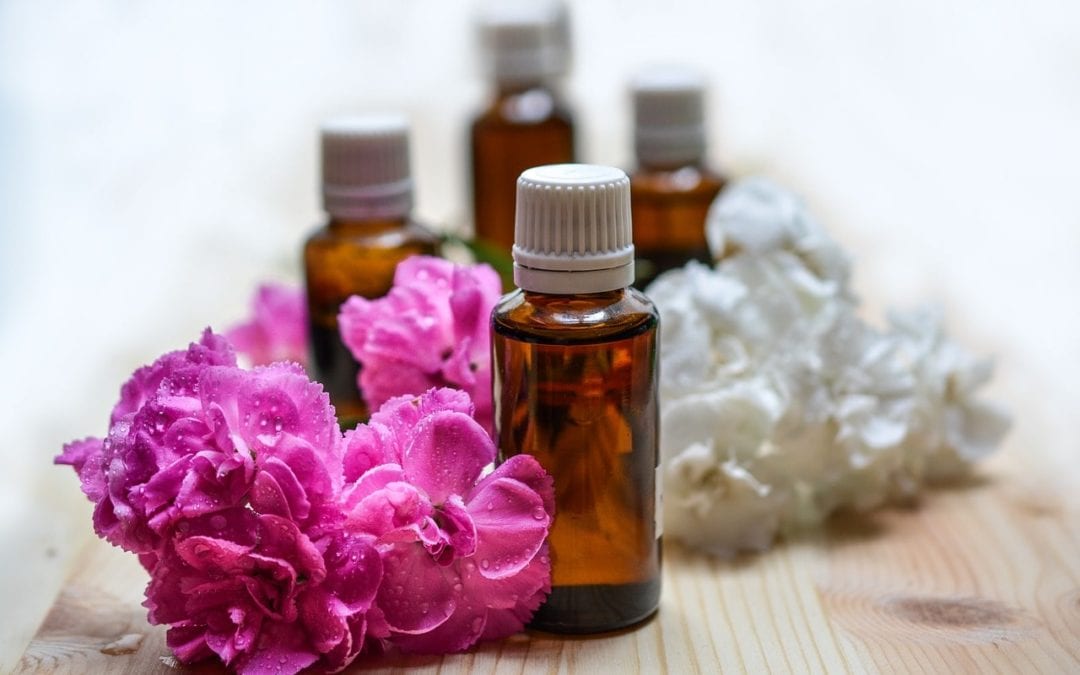Article from WebMD – www.webmd.com
Stacey Haluka discovered essential oils the way many others have in recent years — through an acquaintance who worked for a multilevel marketing company.
During an in-home presentation, the “wellness advocate” hailed the fragrant oils as harmless natural remedies that can treat everything from minor skin irritations and mood swings to autism and cognitive decline. They were so pure, Haluka was assured, they could be safely ingested and liberally applied.
“I fell for it completely and started using them every day,” says Haluka, a 47-year-old writer and motivational speaker from Ontario, Canada.
She infused her water with citrus oils said to detoxify and lathered her skin with stress-relieving lavender. When a faint rash appeared on her forearm, a salesperson told her it was a normal “detox” reaction and advised her to rub frankincense oil on it. She obliged.
But after a few months, raised welts began to creep across her abdomen and up the back of her neck. Ultimately, she landed in the emergency room, eyes swollen, oozing blisters across her face, where doctors swiftly put her on steroids. Her diagnosis: A severe toxic reaction to essential oils.
“Four years later, I still struggle,” says Haluka, who is scarred and still so sensitive to the oils that she has to carefully choose her personal care products and breaks out in hives when around someone wearing them.
She is now suing the company that makes the oils she used.
Haluka is among a growing number of people turning up with chemical burns, allergic reactions, respiratory issues, and other side effects from the popular fragrant plant extracts. In the past year alone, U.S. retail sales of essential oils soared 14% to $133 million — up from $55 million in 2015 — according to market research firm SPINS. That’s not including tens of millions in sales from multilevel marketers who bypass retail shelves and sell directly to people via independent distributors.
Those distributors, and a higher demand for over-the counter “natural” remedies free of the side effects that can come with prescription drugs, has fueled a surge of interest in essential oils among people who use either alternative or conventional medicine. Once available only at natural product stores, they’re now easily found at Walmart and Target.
But as their do-it-yourself use explodes, concerns abound.
“There is definitely credible science behind certain benefits for certain essential oils,” says Cynthia Bailey, MD, a dermatologist in Sebastopol, CA. “But you have to choose wisely, and you cannot use them indiscriminately.”
How Essential Oils Work
As far back as A.D. 1000, healers used mechanical presses or steam to extract essential oils from fragrant plants. Today, practitioners can rub oil-infused lotions on the skin, where the compounds are absorbed into the bloodstream. Or they can diffuse them into the air where, once inhaled, they bind to smell receptors and stimulate the central nervous system, says Joie Power, PhD, a neuropsychologist and aromatherapist who has taught nurses how to use the oils for decades.
Research behind them remains fairly scarce, with scientists only recently testing some of the products in controlled human trials. But thanks to a growing number of studies showing how they work, hospitals and clinics now use the oils more and more for stress relief, pain and nausea relief, and even to prevent bedsores.
One recent study of 300 patients found that those who breathed a mixture of ginger, spearmint, peppermint, and cardamom had much less nausea after surgery. Other research shows that lavender oil can lower levels of the stress hormone cortisol, and inhaling lemongrass aroma before a stressful event can prevent anxiety. Studies also show that tea tree and oregano oils can fight microbes, making them popular treatments for dandruff and toe fungus. Others can be used as an anti-inflammatory.
The trouble, say critics (including longtime aromatherapists), is that companies overstate their potential and downplay risk.
Since 2014, the FDA has sent warning letters to a handful of companies for making unsubstantiated claims that their oils could treat everything from herpes to Ebola. The FDA says only manufacturers of drugs that have passed the agency’s rigorous approval process may make such claims.
Meanwhile, ill-informed at-home users may misuse them. One group of concerned aromatherapists, at the Atlantic Institute for Aromatherapy, began collecting injury reports online. Since the fall of 2013, it has found more than 268, ranging from mild rashes and anaphylactic shock to internal chemical burns from using oils to treat vaginal yeast infections. In 2017 alone, 55 people, including five children and two pregnant women, reported serious reactions. (The organization estimates that fewer than 5 to 10% of adverse reactions are reported.)
Online, chat rooms buzz with horror stories and videos documenting bad reactions, including a Facebook group, “The Unspoken Truth About Essential Oils,” which now boasts nearly 4,000 members.
“Essential oils, properly used, are safe and effective for many routine issues, but I continue to hear of bad, even dangerous, reactions from people who are grossly misusing them,” says Power. “People are being hurt by following some of the inappropriate advice that’s being given out there.”
That “inappropriate advice” often comes from manufacturers’ representatives, she says.
“The safety of essential oils has been compromised by the information that’s been spread by poorly trained sales representatives,” Power says.
Five Essential Oils to Watch Out for
- Bergamot Often used as a natural antiseptic, bergamot is among the biggest culprits for making the skin particularly sensitive to the sun. Avoid sunlight for 12 hours after using it on your skin, even if it’s diluted.
- Clary sage oil It’s often used for calming properties and skin benefits. Pregnant women shouldn’t use it, as some evidence suggests it can induce contractions.
- Peppermint A classic stomach soother, this oil should never be used on infants or small children as it can cause life-threatening breathing problems.
- Eucalyptus If you are on medications, check with your doctor before using this aromatic oil. It may cause certain drugs used for seizures, narcolepsy, and attention deficit hyperactivity disorder to be less effective and can bring on asthma attacks.
- Cinnamon bark Sometimes used in shampoos and lotions, it also can irritate the skin. People with seasonal allergies have been shown to be more prone to bad reactions to it and are advised to avoid it.
What Not to Do
Contrary to what several essential oil companies recommend, the oils generally should not be swallowed, Power says. The body absorbs more this way, boosting the chance that they will interact with medications or cause an allergic or toxic reaction. Even continued exposure to small amounts (a few drops a day in a water bottle) can lead to fatigue and headaches. Taking in larger amounts of certain oils — like tea tree oil, wintergreen, and camphor — can lead to throat swelling, a racing heart, vomiting, and even seizures, says the Tennessee Poison Center, which saw the number of toxic essential oil exposures double from 2011 to 2015.
Meanwhile, essential oils like eucalyptus and peppermint contain compounds called phenol that can irritate the respiratory tract if inhaled, particularly in babies.
And recent research by scientists at the National Institute of Environmental Health Sciences found that lavender and tea tree oils contain estrogen-like and testosterone-inhibiting properties that, if overused, could lead to abnormal breast growth in young boys.
“I would certainly advise teens and children not to use essential oils,” says Jessica Krant, MD, an assistant clinical professor of dermatology at SUNY Downstate Medical Center in New York City.
For pregnant women, even oils used on the skin can enter the placenta and impact an unborn baby. And swallowing some rare oils, including pennyroyal, can lead to miscarriage. The safest bet during pregnancy: Work with a professional who knows how to use them or skip them altogether, Power says.
Many citrus oils contain furocoumarins, which can cause chemical burns when exposed to the sun’s UV rays.
Rachael Armstrong, a 44-year-old mother of five from Omaha, NE, learned this the hard way last year. After weeks of rubbing grapefruit oil on her feet as an appetite suppressant and spiking her water and laundry detergent with lemon oil, she developed a severe sensitivity to the sun that left her with blisters and welts after just a few minutes exposed to its rays. “I admit I was probably overusing them,” she says. “But I don’t think people are aware that even though they’re natural products, they can do real damage.”
Bailey, the dermatologist from California, has seen rashes on eyelids from essential oil droplets emitted by diffusers, around mouths from peppermint oil-infused mouthwash or lip balm, and dime-sized blisters on toes from using undiluted tea tree oil for toe fungus.
Overuse can also lead to lasting problems, as it did for Haluka.
“Once you become sensitized, you will forever be allergic to it,” Bailey says.
And because the FDA does not test oils for safety before they’re sold, it’s critical for consumers to go with a trusted brand.
“There is always a concern that unlisted or hidden ingredients, or dangerous processing techniques leading to contamination, could be lurking,” Krant says.
Representatives from doTERRA, an industry leader with more than 5 million independent distributors or “wellness advocates” globally, say the company’s rate of bad reactions is almost negligible, with .0072% of users reporting them.
“Education and safety is a top priority for doTERRA,” the company said in a prepared statement. It hosts monthly safety training online for distributors and offers safety guides to consumers.
The company, which received an FDA warning letter in 2014 for making unsubstantiated claims about is products, said it is determined to assure its distributors do not overstate claims.
“In the most recent visit from the FDA, they recognized the huge efforts doTERRA has made regarding compliance and gave no recommended corrections,” the statement said.
The company dismisses concerns about essential oils disrupting hormones as based on “inconclusive testing.”
“Essential oils allow users to take ownership of their own health by providing safe and effective options for concerns they face on a daily basis,” the company said.
With all the risks involved, are they still worth a try?
Absolutely, say doctors, aromatherapists, and even Haluka — who has just published a book, The Unspoken Truth About Essential Oils: Lessons Learned, Wisdom Gained.
Her advice: Study up on the different oils, their risks and benefits; consult with a licensed aromatherapist, not just a distributor for a company; and always read the fine print on the bottle or pamphlet about how to use them.






